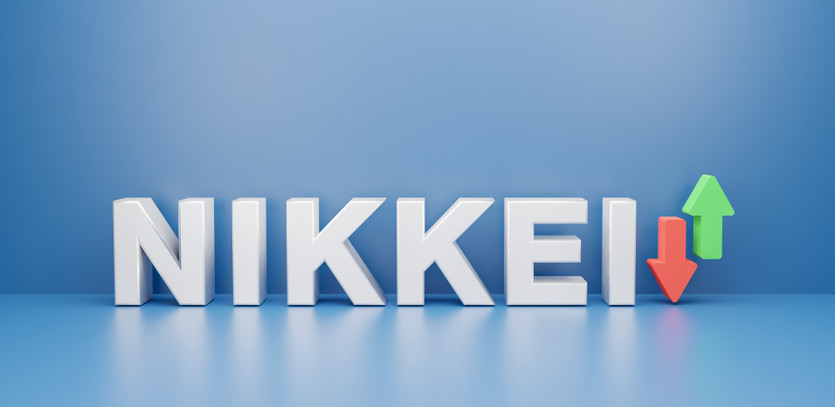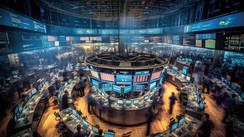The Essence of the Nikkei 225
The Nikkei, often heard in financial news, is essentially the shortened term for Japan's esteemed Nikkei 225 Stock Average. This prestigious index stands as a beacon, illuminating the performance of Japan's top 225 elite blue-chip companies that find their trading ground on the Tokyo Stock Exchange. Drawing a parallel in the Western financial realm, the Nikkei holds a position akin to the renowned Dow Jones Industrial Average (DJIA) Index in the USA.
A Snapshot of the Nikkei's Vitality
- Japan's premier stock index, the Nikkei, encapsulates the vibrancy of the nation's top 225 blue-chip corporate giants.
- The price-weighted nature of the Nikkei index implies that it mirrors the average share prices of the listed companies.
- Some iconic names that find a place in the Nikkei's roster include stalwarts like Sony Corporation, Canon Inc, Nissan Motor Company, and Honda Motor Company.
- However, the Nikkei isn't the only Japanese stock index. The Tokyo Price Index (TOPIX) stands out as a capitalization-weighted index, encompassing all stocks on the Tokyo Stock Exchange.
Diving Deeper: Origins and Evolution of the Nikkei
Originally christened as the Nikkei Dow Jones Stock Average between 1975 and 1985, its current nomenclature pays homage to the Nihon Keizai Shimbun – Japan's premier economic daily, popularly recognized as Nikkei. With roots tracing back to September 1950, its computation is retrospective to May 1949. Pioneers of the Asian corporate realm like Canon Incorporated, Sony Corporation, and Toyota Motor Corporation find pride of place in this venerable index. As a testament to its longevity and relevance, the Nikkei holds the title of Asia's oldest stock index.
Historically, the birth of the Nikkei was set against the backdrop of Japan's renaissance and industrial surge post-World War II. Here, the stock ranking hinges on their share price, a departure from the conventional method of market capitalization. All valuations are in the native Japanese yen, and the annual September review ushers in the necessary compositional changes in October.
A Fascinating Nugget: Every 5 seconds, the Nikkei 225 is recalibrated when the Tokyo Stock Exchange is in session.
Tokyo Stock Exchange and its Intertwining with the Nikkei
Founded in 1878, the Tokyo Stock Exchange (TSE) initially served as the trading platform for bonds issued to the samurai class. As time progressed, it evolved to facilitate trading in government bonds, gold, and silver currencies. Fast forward to the 1920s, and stocks became part of its repertoire. The wartime exigencies of 1943 saw the merger of TSE with five other exchanges, giving birth to a unified Japanese Stock Exchange. However, the war's tumultuous climax in August 1945 led to its temporary shuttering. Rising like a phoenix, the TSE recommenced operations on May 16, 1949, under the newly minted Securities Exchange Act.
Japan's economic rollercoaster in the late 1980s was marked by a spectacular asset bubble, propelled by aggressive fiscal and monetary stimuli to counter the Japanese yen's steep appreciation. Astonishingly, between 1985 and 1989, stock prices and land values witnessed a threefold surge. This economic euphoria peaked with the TSE cornering a whopping 60% of global stock market capitalization. However, the subsequent burst of this bubble in 1990 sent the Nikkei index tumbling, with it shedding a third of its value in a single year. A decade later, in October 2008, the Nikkei plummeted below the 7,000 mark, signifying an 80% erosion from its December 1989 zenith. Although economic stimulatory measures by the Japanese government and the Bank of Japan between June 2012 and June 2015 lent some support, the index lingered at almost 50% below its 1989 high.
TOPIX vs. Nikkei: Drawing Distinctions
While both indexes stem from the TSE, the Nikkei showcases 225 selected stocks, whereas the TOPIX is a holistic representation, encompassing all TSE-listed stocks. The price-weighted nature of the Nikkei signifies that it sways more with high-priced stocks like those in the tech realm. In contrast, TOPIX's capitalization-weighted methodology makes it more sensitive to large market cap entities, primarily financials.
Special Insights
While direct investment in the index remains elusive, there's a plethora of exchange-traded funds (ETFs) that mirror the Nikkei's movements. Popular options on the Tokyo Stock Exchange include Blackrock's iShares Nikkei 225 and Nomura Asset Management Nikkei 225 Exchange Traded Fund. For those seeking a global flavor, the dollar-denominated MAXIS Nikkei 225 Index ETF trades on the New York Stock Exchange.
A Guide to Navigating the Nikkei Waters
For many, the Nikkei 225 Stock Average is the barometer gauging the health of the Japanese economy. It offers a panoramic view of 225 premier Japanese corporations spanning a myriad of industries. With an aura akin to the Dow Jones Industrial Average, it showcases the crème de la crème of Japan's corporate world listed on the Tokyo Stock Exchange.
To harness the Nikkei's potential, while direct investment remains a chimera, one can ride its waves through exchange-traded funds (ETFs).
Historical Performance Lenses
Contrary to traditional stock indexes that typically exhibit steady exponential growth trajectories, the Nikkei 225's journey has been tumultuous. The 1989 crescendo saw it touching an all-time high, only to witness precipitous declines in subsequent decades, culminating in a staggering 81.9% plummet from its peak by March 2009. The tragic earthquake of March 15, 2011, further jolted the index, making it nosedive over 10%. By the end of 2011, the Nikkei was languishing at its lowest year-end valuation in over three decades. As of May 18, 2021, the index was pegged at 28,406.84.
Unique Characteristics of the Nikkei 225
Like its Western counterpart, the Dow Jones Industrial Average, the Nikkei 225 operates as a price-weighted equity index. This methodological difference results in rankings based on stock prices rather than market capitalization. With its inception in 1950 and calculations retroactive to 1949, the Nikkei stands tall as Asia's pioneering index. These annual recalibrations ensure the index remains contemporary and relevant.
The Constituents: Corporate Behemoths of Japan
The Nikkei 225's elite club boasts of illustrious names like Canon Inc., Panasonic Corp., Sony Corp., Nissan Motor Co., Toyota Motor Corp., and Mitsubishi UFJ Financial Group. As a microcosm of Japan's economic dynamism, the index covers sectors ranging from electronics, automobiles, banking, chemicals, foods, and services, to name a few.
Decoding Nikkei ETFs
The universe of Nikkei 225 ETFs offers a simplified way to gain exposure to the index. Traded on stock exchanges like their equity counterparts, these funds reflect the performance of the Nikkei. Some popular ETFs to consider include Blackrock's iShares Nikkei 225, which tracks the index and is traded on the Tokyo Stock Exchange. Nomura's Nikkei 225 ETF mirrors the performance of the Nikkei 225, and its shares trade on the Tokyo Stock Exchange. For those keen on investing in the U.S., the MAXIS Nikkei 225 Index ETF, traded on the New York Stock Exchange, is a compelling option.
Concluding Musings
For enthusiasts keen to dip their toes in the vast Japanese equities ocean, ETFs mimicking the Nikkei 225 provide a feasible entry point. Not only do they encapsulate the diverse array of corporate juggernauts of the Japanese economic landscape, but they also offer a low-cost, diversified vehicle to partake in the Asian economic story.





